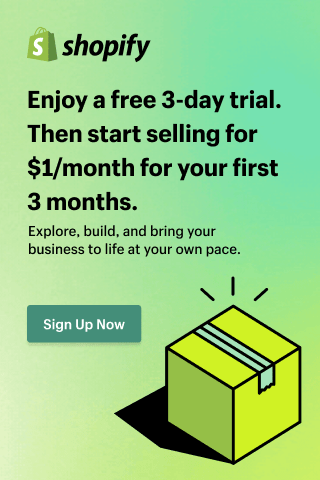We all know how crowded the world of ecommerce is. The secret weapon that can help your brand stand out, especially in dropshipping, can be content marketing.
Now, for dropshippers, building a compelling content strategy that resonates with your target audience and drives conversions can feel challenging. The good news?
Content marketing, if done right, can help you build strong customer relationships, boost your store’s visibility, and ultimately drive sales. This guide will walk you through the basics, such as types of content marketing, and effective content marketing tactics tailored specifically for dropshipping success.
Table of Contents
What is content marketing?
First, let’s talk about what content marketing is. As the name suggests, it’s all about creating and sharing valuable, relevant content to attract and engage a targeted audience.
Unlike traditional advertising, which pushes for a direct sale, content marketing aims to provide value first, whether through educating, informing, or entertaining your audience. By offering valuable information, you build trust with potential customers, positioning your store as the best in your niche.
Content marketing takes on various forms, including blog posts, ebooks, infographics, videos, web pages, and even podcasts. These materials are distributed across multiple channels such as social media platforms, websites, apps, email newsletters, and more. This multi-platform approach is designed to meet your audience where they are, delivering content tailored to each platform’s style and user expectations.
The essence of content marketing lies in its ability to connect with people at different stages of their buying journey. Whether your goal is brand awareness, lead generation, or customer retention, content marketing helps nurture these relationships by offering value every step of the way.
Here’s how content marketing typically works:
- Reaching people where they are: Effective content marketing places your content on platforms where your audience spends their time. For example:
- Sharing engaging posts on social media channels like Instagram and Facebook.
- Distributing video content on TikTok, YouTube, or other popular video-sharing platforms.
- Publishing optimized website content to rank higher on search engines, drawing organic traffic to your site.
- Providing value throughout the buying cycle: Content marketing supports potential customers at every phase:
- Educational content: Creating blog posts or guides that provide valuable information, answering questions or solving problems for your audience.
- Entertaining content: Engaging videos or graphics that resonate with your audience’s lifestyle or interests, subtly reinforcing your brand values.
- Insightful data: Using your brand’s unique insights and data to give audiences information they can’t find elsewhere, positioning your brand as a trusted resource.
Content marketing is essentially the process of building customer relationships by giving them something of value without asking for anything in return immediately.
Over time, as customers recognize the genuine value and expertise your brand provides, they’re more likely to trust you with their purchases. This approach not only drives sales but fosters long-term loyalty and brand advocacy.
Why is content marketing important?
For all the reasons above and more, content marketing has grown into a crucial strategy for businesses of all sizes. It’s not just about selling products but about building trust and offering value to potential customers.
In 2024, HubSpot’s research revealed that 29% of companies actively employ content marketing, and that number continues to grow as the strategy proves its effectiveness.
According to Nielsen, more than half of consumers in the US and Europe ignore mobile and banner ads, often viewing them as intrusive. Instead, they’re more likely to rely on other people’s recommendations and insights from trusted sources before making a purchasing decision.
This is where content marketing shines: by consistently delivering valuable, relevant information, brands can establish themselves as trustworthy and knowledgeable sources, encouraging consumers to choose them over competitors.
Recent data highlights the effectiveness of content marketing even more:
- Research by the Content Marketing Institute (CMI) indicates that 70% of B2C marketers believe content marketing has become more important to their organizations over the past year. By providing insights, entertainment, or helpful information through blogs, videos, or infographics, brands can transform transactional relationships into deeper, trust-based connections.
- Content consumption patterns show a clear preference for articles over ads. The Content Marketing Institute found that 70% of consumers prefer to learn about products through articles rather than ads. Furthermore, 44% of buyers consume three to five pieces of content before they engage with a vendor. This highlights that well-curated, informative content can significantly impact a buyer’s journey.
- Social media has become an essential sales channel, with 87% of social sellers stating that social selling is effective. Additionally, 59% report making more sales through social media in 2023 than in 2022, demonstrating that content marketing combined with social media outreach can be a highly effective way to generate revenue and foster customer relationships.
Content marketing is now more than just a tactic; it’s vital to building a long-lasting relationship with your customers. By sharing helpful information, offering unique insights, or simply engaging them through entertaining content, brands can effectively turn audiences into loyal customers.

Types of content marketing to use in dropshipping
When it comes to content marketing, there’s no one-size-fits-all approach. Every brand has the flexibility to design a content strategy that aligns with its unique goals, audience preferences, and strengths. Here are some of the most impactful types of content marketing that can elevate your dropshipping business:
Online content marketing
Online content marketing means all material published on your website, especially your key landing pages. Crafting a strong online content marketing strategy can improve your search engine rankings, placing your online store in front of the right people at the right time. For instance, a well-optimized homepage and product pages with targeted keywords and engaging content can significantly boost traffic and conversions.
Social media content marketing
With over 4.5 billion active social media users worldwide, social platforms are essential for reaching a broad audience. Channels like Instagram, Facebook, TikTok, and X provide diverse ways to engage with your audience, from posts and live videos to stories and reels.
For dropshippers, social media offers the perfect opportunity to showcase products, interact with followers, and encourage user-generated content that enhances brand credibility.
Blog content marketing
Blogs are a versatile and valuable type of content marketing that allow for deep dives into various topics relevant to your audience. Through blogs, you can answer customer questions, provide helpful tips, and promote related content.
Integrating social share buttons, internal links, and product mentions can further boost engagement, traffic, and conversions, positioning your brand as a helpful resource in the dropshipping niche.
Infographic content marketing
Infographics combine text and visuals to present information in a digestible, appealing format. They are especially effective for breaking down complex or data-driven topics, like market trends or product comparisons, into easy-to-understand graphics.
Infographics can help you capture attention quickly and are highly shareable, making them a fantastic tool for building brand awareness and authority.
Podcast content marketing
Podcasts have surged in popularity, with projections indicating that over 71 million people in the US alone will be listening by 2025. As a dropshipping business, creating a podcast on topics related to ecommerce, entrepreneurship, or industry trends allows you to engage listeners on a more personal level.
Podcasts also provide flexibility in episode structure, guest features, and advertising opportunities.
Video content marketing
Video marketing is a powerful content format, with 91% of businesses reporting using it as a key marketing tool. For dropshippers, video can help demonstrate product use, share customer testimonials, or offer tips on product maintenance.
Hosting videos on social media, YouTube, or your website can help strengthen relationships with your audience, drive conversions, and provide a solid ROI.
B2B content marketing
Business-to-business (B2B) content marketing targets people operating within other companies, often focusing on longer buying cycles and high-value transactions. B2B content typically involves in-depth resources such as whitepapers, industry reports, and eBooks that showcase expertise and provide value.
By positioning yourself as an industry authority, you’re more likely to attract quality leads and increase your chances of securing long-term partnerships.
B2C content marketing
Business-to-consumer (B2C) content marketing aims to provide content that enhances consumers’ lives, often through quick and digestible formats. This may include short articles, social media posts, and entertaining videos that align with the preferences of a broad audience.
In B2C content, the goal is to build engagement and encourage conversions, often by offering special benefits or creating an exclusive community around your brand.
Now that we explained all these, let’s break down some of the best content marketing tips for your dropshipping store.
1. Develop your brand story and voice
Creating a compelling brand story and voice is the foundation of any successful content marketing strategy. Dropshipping businesses don’t control manufacturing or shipping, so building a connection with customers through storytelling is essential.
Think about what makes your brand unique. Is it a focus on eco-friendly products, or perhaps a mission-driven approach?
Tips to craft a strong brand story:
- Identify your values: Establish what your brand stands for, as well as what makes it different from competitors. Read more about the steps to create a strong brand identity in dropshipping.
- Focus on the ‘why’: Explain why you started this business and why your products matter.
- Use consistent voice and tone: From website copy to social media posts, ensure your brand voice is consistent. Whether your tone is casual or professional, a coherent voice builds trust.
2. Drive traffic and educate your audience through blogging
Blogging is an effective way to drive organic traffic and improve your search engine ranking. Regularly publishing high-quality blog articles allows you to educate your audience, address their pain points, and highlight the benefits of your products.
Blogging tactics for dropshippers:
- Focus on product-related content: For instance, if you’re selling fitness products, you could create content around workout tips or equipment benefits.
- SEO optimization: Include relevant keywords and long-tail search terms that are less competitive but highly targeted. This increases the chance of ranking higher on search engines. Read more about best SEO practices for your dropshipping store.
- Solve problems: Write posts that answer customer questions. If customers often ask, “What’s the best yoga mat for beginners?” create a blog post about it.
Blogging isn’t an overnight traffic generator, but it builds a long-term foundation for organic growth and helps establish your brand as a trustworthy source of information.

3. Showcase the value of your products with product reviews and tutorials
Potential customers may be hesitant to buy products online if they can’t physically touch them. Product reviews and tutorials bridge this gap, allowing customers to understand and appreciate the products’ features and benefits.
Effective product review and tutorial content ideas:
- Video reviews: Short, engaging video reviews of your products help people envision what they’re buying. Platforms like YouTube, Instagram, and TikTok are ideal for these.
- Step-by-step tutorials: Show customers how to use your products effectively. If you’re selling kitchen gadgets, create tutorial videos on recipes that use those gadgets.
- Customer testimonials: Authentic customer testimonials add social proof. Encourage satisfied customers to share their experiences and, with their permission, and then feature these on your site or social media.
4. Build community and engagement with social media content
Social media platforms are ideal for building a community around your brand, where potential and existing customers can engage with your content, learn about new products, and connect with your brand personality.
Social media content tactics for dropshipping:
- User-generated content (UGC): Encourage customers to share photos or videos of them using your products. UGC adds authenticity and social proof, making it more likely for others to trust and buy from your brand.
- Engagement-focused posts: Use interactive content like polls, Q&A sessions, or “This or That” posts to boost engagement.
- Show behind-the-scenes content: Show your audience how you curate products, create content, or manage day-to-day operations. This transparency helps humanize your brand.
Social media allows you to engage directly with your audience and helps foster loyalty. Platforms like Instagram and TikTok are particularly powerful for reaching younger audiences, while Facebook is ideal for engaging with a diverse age range.
Here are more ideas on how to run effective ecommerce social media campaigns.
5. Nurture leads and drive repeat purchases via email marketing
Email marketing is one of the most effective tactics for dropshippers, allowing you to nurture leads, build relationships, and convert subscribers into repeat customers.
Email marketing tips for dropshipping:
- Welcome series: Set up an automated welcome series for new subscribers to introduce your brand, share popular products, and provide exclusive discounts.
- Product recommendations: Use segmented email lists to suggest products based on the subscriber’s previous purchases or interests.
- Abandoned cart reminders: Remind potential buyers of the items left in their cart, sweetening the deal with a discount to encourage conversions.
- Regular newsletters: Share valuable content, such as new blog posts, product updates, and special promotions, to keep your audience engaged.
Email marketing allows you to create a personal experience, encouraging both first-time and repeat purchases.
6. SEO content strategy to capture organic traffic
SEO is crucial for dropshipping, helping to attract customers who are searching for the exact products you’re selling. By optimizing content with relevant keywords, you improve your store’s visibility and chances of ranking high on search engines.
SEO content tactics for dropshipping success:
- Product descriptions: Optimize product descriptions with targeted keywords and engaging copy that highlights benefits over features.
- FAQ pages: Common customer questions like “How long does shipping take?” or “Can I return a product?” can be optimized for search engines and improve customer satisfaction.
- Educational blog content: Informative blog posts around common search terms help drive traffic. For example, if you sell skincare products, blog posts on “Best Skincare Routine for Dry Skin” may attract your target audience.
SEO is a long-term strategy, but it can significantly impact your dropshipping store’s traffic and sales over time.
7. Boost credibility and reach with influencers
Partnering with influencers is one of the quickest ways to boost brand awareness and reach new audiences. While macro-influencers bring a larger following, micro-influencers can offer higher engagement rates and often have a closer relationship with their audience.
How to use influencers in content marketing:
- Product reviews and unboxings: Send free products to influencers and ask them to post an honest review on their channels. Their followers trust their opinions, making it a great way to build trust.
- Giveaways and contests: Team up with influencers to run giveaways that encourage followers to engage with your brand. This is a great way to get more followers and expand your audience reach.
- Brand ambassadorships: Work with influencers on an ongoing basis as brand ambassadors, building consistent exposure for your products.
Influencer collaborations not only increase visibility but also lend credibility to your brand through trusted personalities.
Read more: Leveraging Influencers in Dropshipping: A Comprehensive Guide
8. Engage and convert with visual content
Video marketing is a powerful way to engage customers and showcase your products in an interactive format. With platforms like TikTok, YouTube, and Instagram Reels, video content is more popular than ever.
Video content ideas for dropshipping:
- Product showcases: Create short product videos that highlight features, uses, and benefits.
- Explainer videos: Explain why customers should buy your products, the problems they solve, and how they’re better than competitors.
- Customer testimonials: Video testimonials are highly effective for building trust and authenticity.
Video content is highly engaging and can drive higher conversion rates than other forms of content.
9. Build a knowledge hub for expertise and trust
A knowledge hub is a dedicated section of your website where customers can find answers to their questions and learn about your niche. This can include blogs, tutorials, FAQ sections, and how-to guides.
Benefits of a knowledge hub:
- Establish authority: Position your brand as an expert in your niche by providing valuable information that answers your customers’ questions.
- Increase engagement: Offering educational content helps customers feel connected and makes your website a go-to resource.
- Enhance SEO: A knowledge hub packed with high-quality content improves SEO and draws more organic traffic to your store.
A knowledge hub creates a resource customers can turn to, improving their trust and loyalty over time.
Conclusion
Content marketing is a powerful way for dropshippers to build trust, engage customers, and drive conversions. From building a consistent brand story to using SEO, influencer marketing, and video content, the possibilities are endless.
Focus on creating valuable, targeted content that educates and engages your audience. In the competitive dropshipping world, the right content marketing tactics can set your store apart and build a loyal customer base that keeps coming back.











